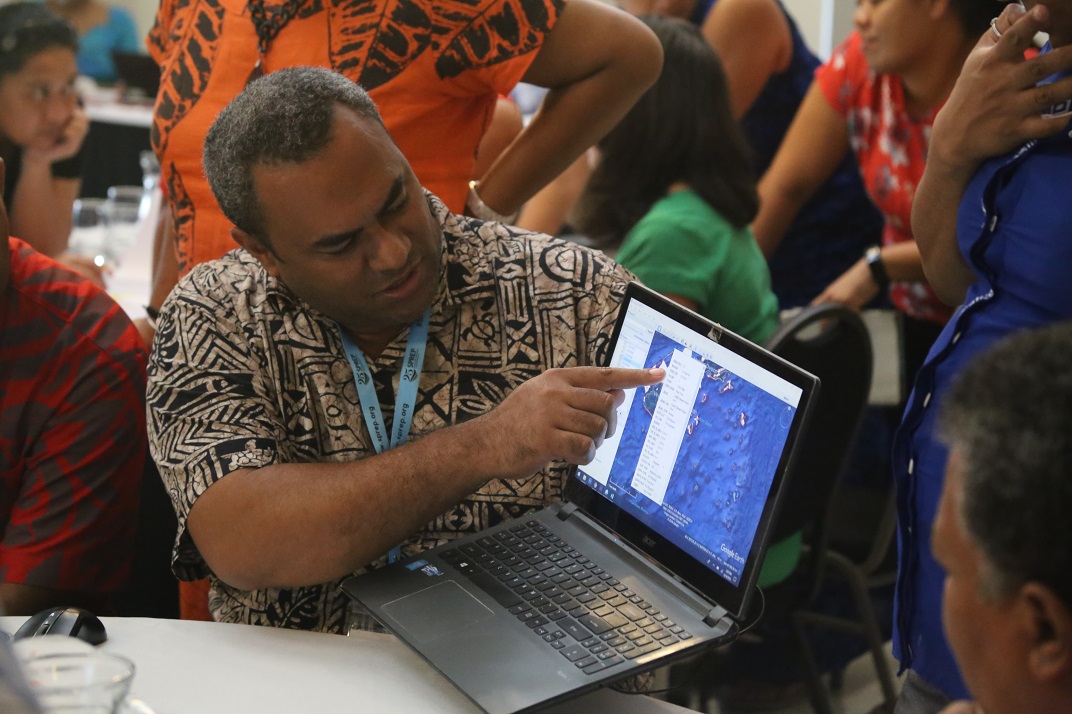Three updated online tools to support protected area decision-making
There are a growing number of decision-support tools to support biodiversity-related decision-making. In this article, we highlight three new and newly upgraded platforms, which are directly related to sharing information about protected and conserved areas: the Digital Observatory for Protected Areas (DOPA), the BIOPAMA Reference Information System (BIOPAMA RIS) and the Integrated Biodiversity Assessment Tool (IBAT).

Photo: BIOPAM
1. The Digital Observatory for Protected Areas 3.0 (DOPA)
DOPA Explorer is a web based information system on the world's protected areas. It uses global reference datasets and Earth Observation data to support monitoring and reporting through a broad range of consistent and comparable indicators at country, ecoregion and protected area level.
All indicators are well documented in a series of indicator factsheets.
DOPA Explorer 3.0, launched at the latest CBD COP, has been developed by the European Commission’s Joint Research Centre and is available open access at: http://dopa-explorer.jrc.ec.europa.eu/
2. The BIOPAMA Reference Information System 2.0 (BIOPAMA RIS)
The BIOPAMA RIS is a web-based, open source information system specifically developed for African, Caribbean and Pacific (ACP) protected areas. It provides up-to-date information on the status of conservation in ACP countries, based on a broad range of consistent and comparable indicators at protected area, national and regional level, thus tracking progress towards agreed conservation targets.
The BIOPAMA RIS features a suite of standard indicators and metrics from the Digital Observatory for Protected Areas (DOPA) and the Copernicus Earth Observation programme. DOPA is a global system, and differs from RIS in that it is based on harmonised global data that is processed automatically for 30000 protected areas worldwide – that is all protected areas larger than 25km2, which represent over 95% of the total surface area which is defined as protected. One can link easily from RIS to DOPA to check out the country and site level reports, plus you can use DOPA to explore data for all the non-ACP countries.
The BIOPAMA RIS will be implemented in the Regional Observatories for protected areas and biodiversity hosted in the ACP regions, responsible for running and customizing them based on regional priorities. It also provides fundamental information and factual evidence to enable Regional Observatories to identify priorities for actions that can be funded through the BIOPAMA Action Component.
Version 2.0 of the RIS was launched in December 2018. Explore it at ris.biopama.org.
3. The Integrated Biodiversity Assessment Tool 3.0 (IBAT)
IBAT 3.0 was launched in October 2018. It is the upgraded web-based mapping and reporting tool used by companies, governments, researchers, and financial institutions to access global biodiversity datasets, currently the IUCN Red List of Threatened Species, the World Database on Protected Areas, and the World Database on Key Biodiversity Areas.
IBAT has thousands of users including WWF, the World Bank Group, Shell, Mitsubishi, and the Department of Environment Australia. IBAT is maintained by the IBAT Alliance, a partnership including BirdLife International, Conservation International (CI), International Union for Conservation of Nature (IUCN), and UN Environment World Conservation Monitoring Centre (UNEP-WCMC).
IBAT offers data through a subscription service; all users have access to the free subscription level. Additional analysis and reporting functions are available through different subscription levels, which are intended to help recover the cost of investments in the underlying datasets. In 2018, $825,000 USD was generated through IBAT to be redistributed back to the datasets.
Through IBAT, the Alliance seeks to support both better decision making and generate income in order to invest in the improved collection, update and management of biodiversity data to inform those decisions. Find about more in this short video.
For more information about these tools, please contact natasha.ali@iucn.org



